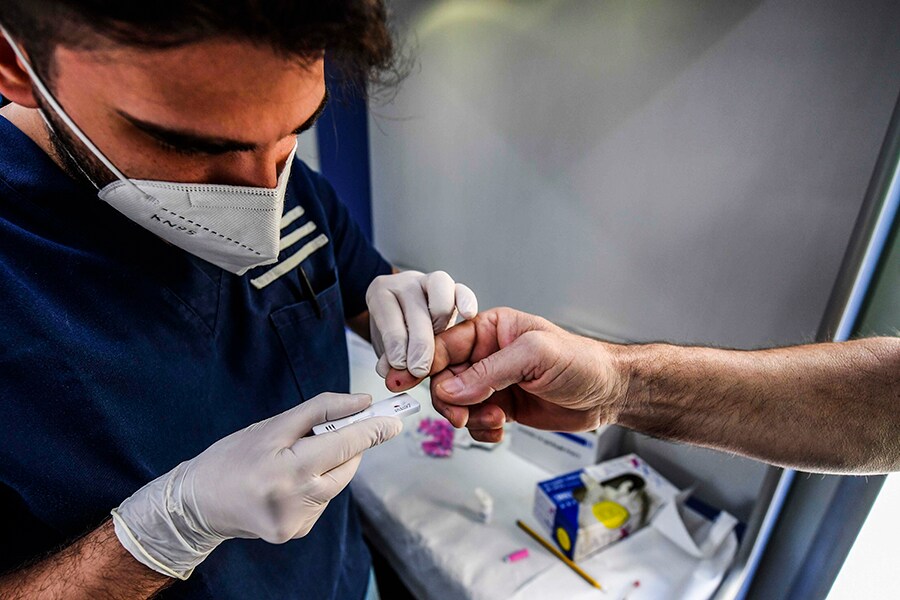
Why antibody tests won't help you much
Many tests are inaccurate, some look for the wrong antibodies and even the right antibodies fade away, said experts
 Naples, Campiania, Italy, 2020/06/15: A medical worker handles an antibody rapid serological test for COVID-19 following a finger prick blood sample from a man.
Naples, Campiania, Italy, 2020/06/15: A medical worker handles an antibody rapid serological test for COVID-19 following a finger prick blood sample from a man.
Image: Salvatore Laporta/KONTROLAB/LightRocket via Getty Images)
Getting an antibody test to see if you had COVID-19 months ago is pointless, according to guidelines issued this week by a major medical society.
Many tests are inaccurate, some look for the wrong antibodies and even the right antibodies fade away, said experts at the Infectious Diseases Society of America, which issued the new guidelines.
Because current tests cannot determine if someone is immune, the society said, they “cannot inform decisions to discontinue physical distancing or lessen the use of personal protective equipment.”
Antibody testing generally should be used only for population surveys, not for diagnosing illness in individuals, the panel said. But its guidelines described two situations in which antibody testing could be used when the normal diagnostic tests for the virus — called PCR tests — failed or were likely to fail.
People who felt sick weeks or months ago and now wonder if they are immune to COVID-19 “probably shouldn’t bother” getting an antibody test, said Dr. Angela M. Caliendo, a testing expert at Brown University’s Alpert Medical School and a member of the society’s expert panel.
©2019 New York Times News Service




